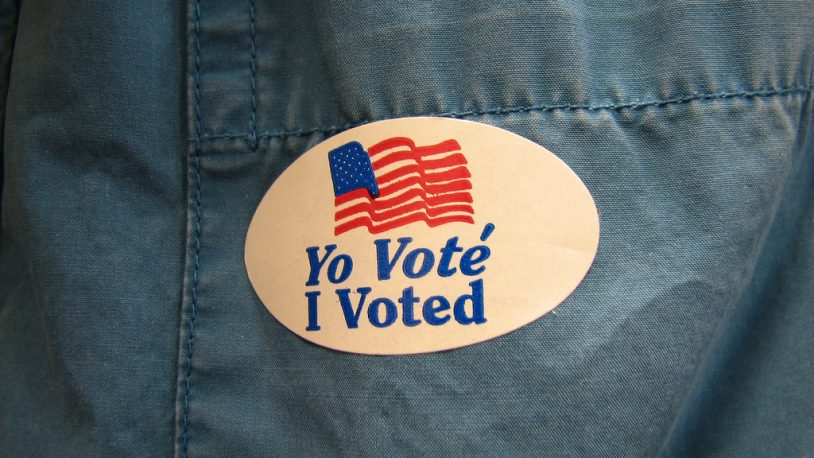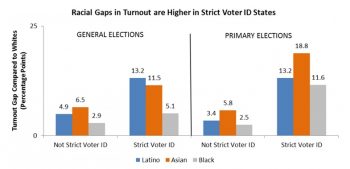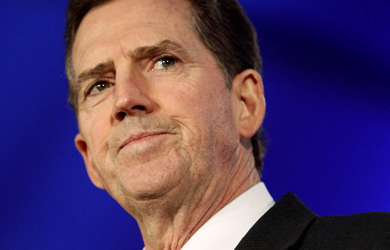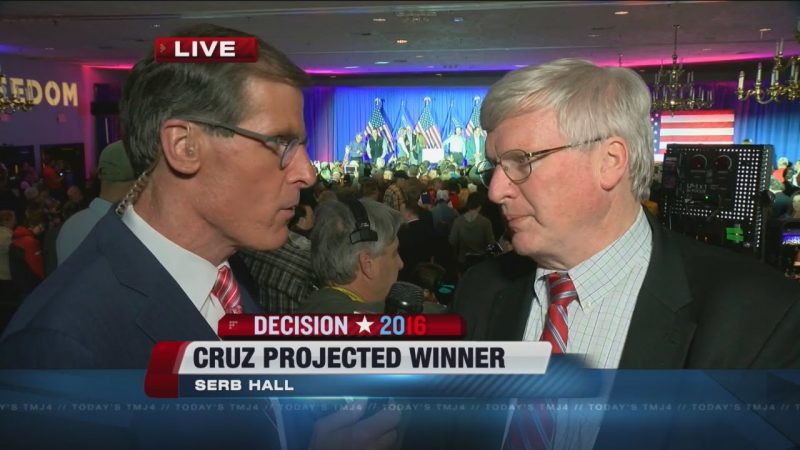A new study by three political science professors found that state laws ostensibly targeting the fictional menace of voter fraud “have a disproportionate effect on minorities.”
Writing today in the Washington Post, professors Zoltan L. Hajnal, Nazita Lajevardi and Lindsay Nielson reveal a wide “turnout gap between whites and Latinos, Asian Americans and African Americans in states with and without strict voter ID laws.”
After noting that “strict voter ID laws suppress minority votes,” they add that these laws have also skewed the electorate to help Republicans win elections.
While proponents of strict voter ID laws—almost always Republicans—claim that there is a need to crack down on virtually nonexistent voter fraud, they effectively tilt elections to help Republicans by preventing people of color from voting, a fact admitted by many Republicans.
Hispanics are affected the most: Turnout is 7.1 percentage points lower in general elections and 5.3 points lower in primaries in strict ID states than it is in other states. Strict ID laws mean lower African American, Asian American and multiracial American turnout as well. White turnout is largely unaffected.
These laws have a disproportionate effect on minorities, which is exactly what you would expect given that members of racial and ethnic minorities are less apt to have valid photo ID.
In the graph below, we display the turnout gap between whites and Latinos, Asian Americans and African Americans in states with and without strict voter ID laws. In general elections in non-strict states, for instance, the gap between white and Latino turnout is on average 4.9 points.
But in states with strict ID laws, that gap grows to a substantial 13.2 points. The gap between white turnout and Asian American and African American turnout also increases.
The right side of the figure shows that the same thing happens in primary elections — and more dramatically. For example, the white-black turnout gap grows from 2.5 to 11.6 when a state adds strict ID laws. The racial imbalance in U.S. voting expands.
These findings persist even when we take many other factors into account — including partisanship, demographic characteristics, election contexts and other state laws that encourage or discourage participation. Racial gaps persist even when we limit our analysis to Democrats or track shifts in turnout in the first election after strict rules are implemented. Definitively determining that the laws themselves are what lowers turnout is always difficult without an experiment, but however we look at it, strict voter ID laws suppress minority votes.
All of this, of course, has real political consequences. Because minority voters tend to be Democrats, strict voter ID laws tilt the primary electorate dramatically.
All else equal, when strict ID laws are instituted, the turnout gap between Republicans and Democrats in primary contests more than doubles from 4.3 points to 9.8 points. Likewise, the turnout gap between conservative and liberal voters more than doubles from 7.7 to 20.4 points.









